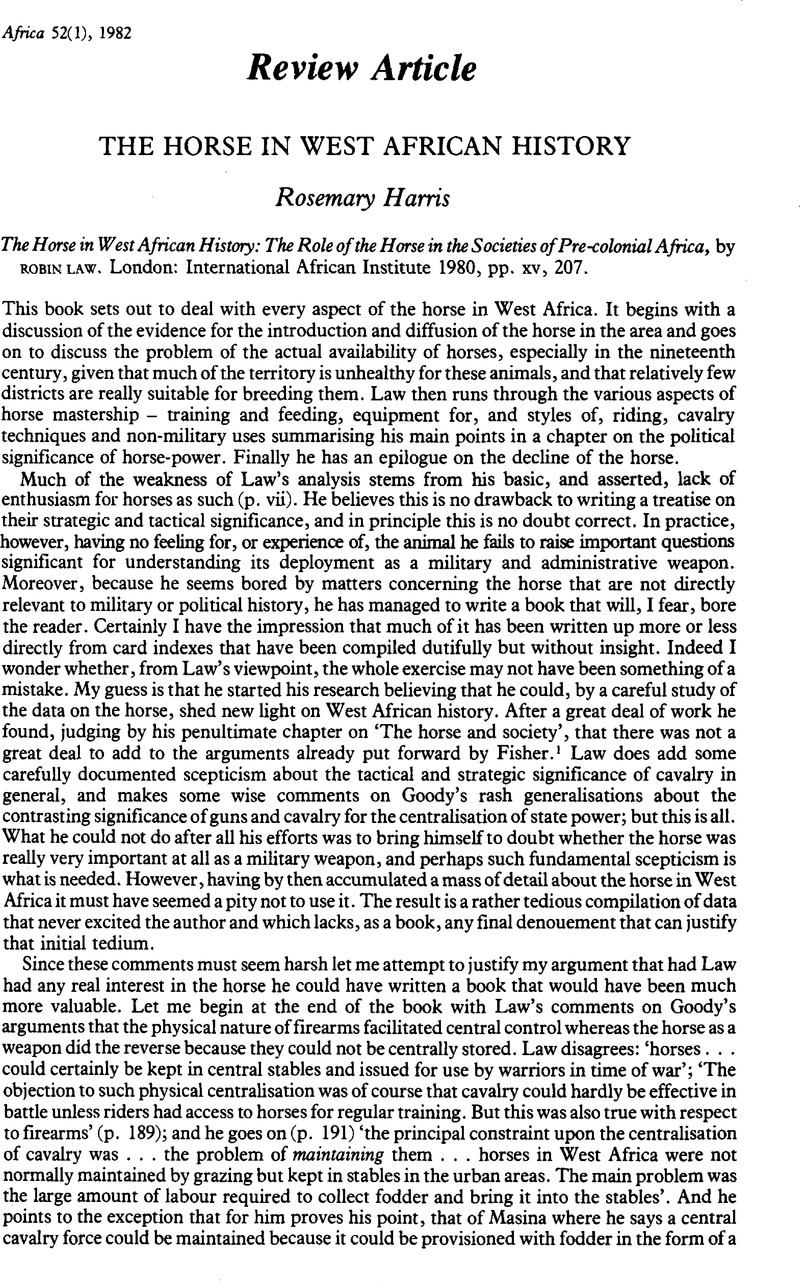Published online by Cambridge University Press: 07 December 2011

1 Fisher, H. J. ‘“He swalloweth the ground with fierceness and rage”: the horse in the Central Sudan, 1. Its introduction’ Journal of African History, 13(3), 369–88Google Scholar.
2 Daumass, General E. 1968. The Horses of the Sahara (translated by Ohlendorf, Shiela M.) University of Texas Press (originally published in French c. 1850)Google Scholar.
3 Houpt, T. R. ‘Water, electrolytes and acid-base balance’ in Swanson, M. J. (ed.) Duke's physiology of domestic animals (9th edition).Google Scholar
4 It is said in one place that ‘Horses require up to 50 litres per day above the water in food’ (MacFarlane, W. V. ‘Terrestrial animals in dry heat: ungulates’ in The Handbook of physiology, section 4, published by the American Physiological Society)Google Scholar ; and in another place MacFarlane gives a table for the amount of water eliminated each day by various animals, the figure of the horse being 140 ml per kg bodyweight in twenty-four hours- the average weight of a fourteen-hand horse being 380 kg ( ‘Comparative functions of ruminants in hot weather’ in Hafez, E. (ed.), Adaptation of Domestic Animals, 1968. Philadelphia, Pa.: Lea & FebigerGoogle Scholar .)
5 , MacFarlane, Handbook of PhysiologyGoogle Scholar .
6 Abrams, J. T. 1968. ‘The nutrition and feeding of horses’ in Tutt, J. F. Donald (ed.) M. J. Hayes Veterinary Notes for Horse Owners, revised (16th) edition p. 632. Stanley Paul & CoGoogle Scholar .
7 Ibid., p. 630.
8 Ibid., p. 632.
9 Trench, Charles Chenevix, 1970. A History of Horsemanship, p. 97. London: Longman Group LtdGoogle Scholar .
10 Denham, D. & Clapperton, H. 1826. Narrative of Travels & Discoveries in Northern and Central Africa in the Years 1822, 1823 and 1824, pp. 131–8. London: John MurrayGoogle Scholar .
11 Ibid., p. 138.
12 Wilks, I. 1975. The Asante in the Nineteenth Century, p. 41. Cambridge University PressGoogle Scholar .
13 Ibid., p. 30.